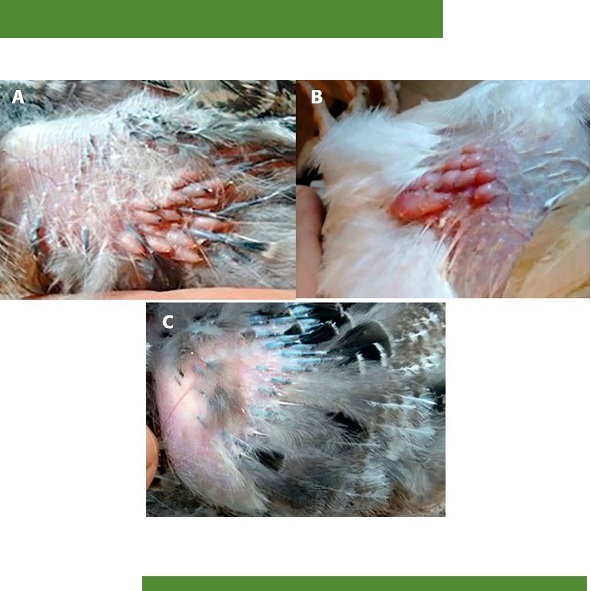Attenuation of a Turkeypoxvirus field strain as an alternative to heterologous vaccination in turkeys
Contenido principal del artículo
Resumen
Avian pox can severely impact turkey production systems. Vaccination programs in Mexico use commercially available Fowlpoxvirus vaccines, that are used across different bird species. Nonetheless, there are reports of sporadic disease outbreaks among vaccinated turkeys, which suggest that heterologous vaccines may provide limited immunity, presenting the need to develop homologous vaccines that can better protect turkeys. This study compared the protection granted to turkey chicks by a commercial Fowlpoxvirus vaccine and by a live attenuated Turkeypoxvirus vaccine after a challenge with a field isolated Turkeypoxvirus virus. Histopathology, polymerase chain reaction, and sequencing of DNA were used for viral identification. A Turkeypoxvirus strain was first isolated in chicken embryo lesions, and subsequently adapted through serial passes in chorioallantoic membrane to produce the homologous vaccine. The attenuated virus was used as a vaccine when a 104.4 embryo ID50/mL titre was reached. Three groups of three-week-old turkey chicks were used for challenge experiments. Subjects in Group 1 were immunized with the attenuated Turkeypoxvirus vaccine (homologous vaccine). Chicks in Group 2 were vaccinated with the commercially available heterologous vaccine (Fowlpoxvirus). Subjects in Group 3 were not vaccinated and received only saline solution (control group). Two weeks after vaccination, animals from Group 1 reached a 97.7 ND50 seroneutralization titre, while levels reached in Group 2 birds and in control chicks were 11.7 ND50 (Group 2) and zero, respectively. At this time, all groups were challenged with a suspension of a field-isolated Turkeypox virus. The homologous vaccine afforded 100% protection in Group 1 (10/10 individuals), while only 10% (1/10) of individuals in Group 2 were protected by the commercial heterologous Fowlpoxvirus vaccine. None of the non-immunized birds in Group 3 were protected (0/10). These results show that the homologous vaccine afforded a greater protection against a Turkeypox virus infection than that observed for the heterologous vaccine, and that a homologous vaccine can be efficiently produced by isolating and attenuating the virus from turkeypox lesions, through chorioallantoic membrane serial passes.
Detalles del artículo
License

Veterinaria México OA por Facultad de Medicina Veterinaria y Zootecnia de la Universidad Nacional Autónoma de México se distribuye bajo una Licencia Creative Commons Atribución 4.0 Internacional.
Basada en una obra en http://www.revistas.unam.mx
- Todos los artículos en Veterinaria México OA se publican bajo una licencia de Creative Commons Reconocimiento 4.0 Unported (CC-BY 4.0). Con esta licencia, los autores retienen el derecho de autor, pero permiten a cualquier usuario compartir, copiar, distribuir, transmitir, adaptar y hacer uso comercial de la obra sin necesidad de proporcionar un permiso adicional, siempre y cuando se otorgue el debido reconocimiento al autor o fuente original.
- Al utilizar esta licencia, los artículos en Veterinaria México OA cubren o exceden todos los requisitos fundacionales e institucionales para ser considerados de Acceso Abierto.
- Los autores no pueden utilizar material protegido por derechos de autor en su artículo a menos que ese material esté también disponible bajo una licencia igualmente generosa.



